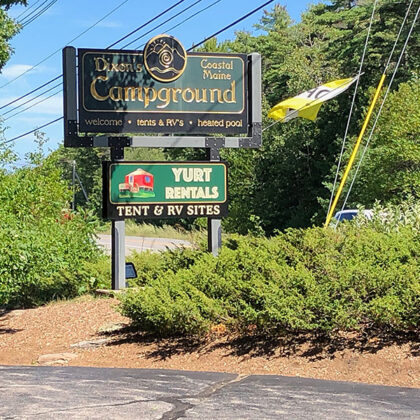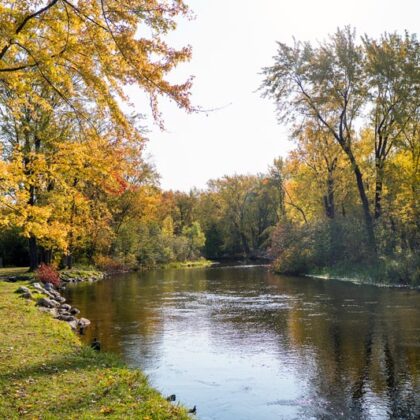Table Rock Lake, near Branson, MO, is a Workamping opportunity which combines the beauty of nature with the hustle and bustle of a large tourist destination.
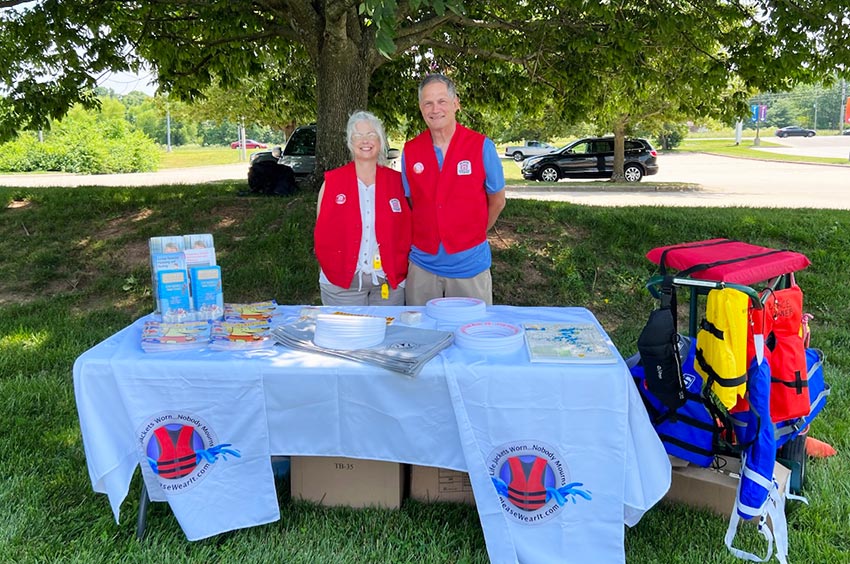
by Greg Gerber
The lake, which covers 42,000-surface-acres, was created in 1958 by the U.S. Army Corps of Engineers (USACE) following the construction of a dam. On a map, the lake looks like a winding serpent, but the project is well known for its recreational activities, which include fishing, swimming, tubing, boating and waterskiing.
The project hires 13 volunteer Workampers every 90 days, except in winter, to serve in two specific areas – camp hosting and visitor center.
Camp Hosts
A relatively new job at Table Rock Lake, and previously performed by independent contractors, Workampers serve as camp hosts at the project’s 13 public campgrounds.
They interact with the public by greeting visitors and checking campers in or out by using the recreation.gov reservation system.
Workampers staff a gate, but they no longer accept or handle cash. A network of kiosks allows visitors to pay for day use and annual passes. Volunteers also utilize a tablet computer to swipe credit cards for day use passes.
Workampers may need to show visitors how to use the fee machines, and they frequently remind guests about the project’s policies and rules relating to water safety.
Each campground has a swim beach and boat ramp, so there are plenty of opportunities to provide water safety instruction. Workampers will pass out flyers in addition to Frisbees, beach balls, coloring books and other fun giveaways.
All the locations have a life jacket loaner station which allows people to temporarily check out life jackets owned by USACE.
“The life jackets are available on a first-come, first-served basis. Volunteers may help visitors select the correct size and ensure they are wearing the jacket properly,” Ranger Matt Robbins said. “Every week, we inspect the loaner jackets to make sure they are still in good condition and safe to use.”
No Workampers serving as camp hosts at Table Rock Lake are involved in enforcement activities, he explained. They may remind people of the rules during check-in, when someone is being too loud or acting in an unsafe manner.
“For any issues involving altercations with campers or alcohol use of any sort, Workampers just call a ranger right away,” Matt said. “Not only is that a safety precaution for our volunteers, but rangers are trained to de-escalate situations.”
Visitor Center
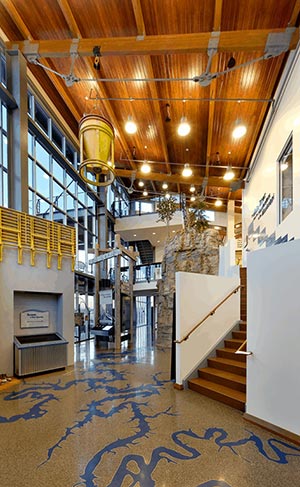
The Dewey Short Visitor Center welcomed 110,000 guests in 2023. As one of the largest centers within USACE, it is a popular place for school field trips and other organized groups to use the large classroom and outdoor areas.
Workampers staff the front desk to greet visitors and orient them to the building as well as answer a variety of questions. They are often tasked to assist rangers in making presentations to community groups, and to help with spreading a message about water safety. In fact, Workampers often don a costume to become Bobber, the water safety dog.
Occasionally, rangers will be asked to visit local schools to teach students about conservation efforts, and Workampers may tag along to provide assistance.
“One of our big events last year was at the Branson Elementary School, which was doing a water safety program for about 300 students as part of their summer school curriculum,” Ranger Angela Stone said. “We conducted water safety relay races and put on a life jacket fashion show. Of course, Bobber also made an appearance.”
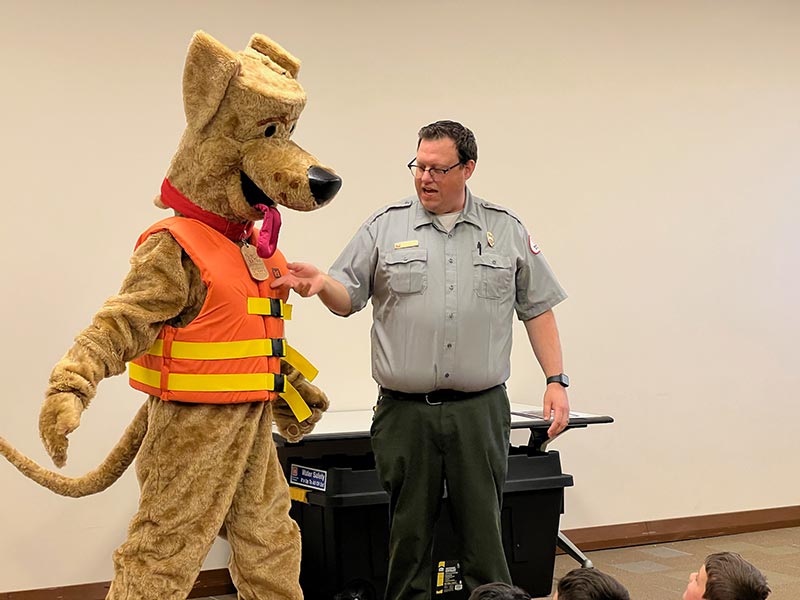
There are a number of garden beds in front of the visitor center, and Workampers who have green thumbs can help maintain them by pulling weeds and planting flowers. Sometimes school groups and community organizations, such as Scout troops, come to the park to engage in conservation or clean-up service projects.
“We have a variety of duties for which our volunteers provide assistance, and I do my best to match them with jobs they enjoy,” she explained. “For example, some people absolutely hate pulling weeds, but get enthused when a bus of students rolls in for a field trip. We work with our Workampers’ preferences to try to ensure everyone enjoys what they’re doing.”
Work Hours
As a general rule, volunteer Workampers put in about 24 hours of service a week. As camp hosts, they enjoy a schedule where they work four days on, and have four days off. That means their days off vary from week to week.
The visitor center is open daily from 9 a.m. to 4 p.m., and Angela likes to schedule her volunteers to work four-hour shifts. However, if Workampers prefer to work a full day, they can.
The project is closed during the winter months, so volunteers are needed from April through October. Workampers generally commit to serving for three months.
“If I have a volunteer who is interested in staying longer than that, and we have a need for their service and an empty campsite, I will try to accommodate that,” Angela said.
“We definitely want volunteers to commit to a minimum of three months, but we do have some eight-month seasonal positions available which are generally used by camp hosts,” Matt added.
When it comes to scheduling, Angela likes to rotate days off so volunteers can work Thursday, Friday and Saturday one week, but Friday, Saturday and Sunday the next.
“I like to rotate the days off so nobody is ever stuck working all the weekends, afternoons or all the mornings,” she explained. “If someone needs a day off when they are scheduled to work, I have no problem with volunteers swapping shifts as long as there is someone here to help keep me in line. We try to be flexible.”
Ideally, there are two hosts assigned to each campground, said Matt. If that’s not possible, volunteers are scheduled to work Thursday through Sunday when a majority of visitors are in the park.
“Typically, we like to do a spot check between 8 and 9 a.m. This allows camp hosts to drive around the park to make sure everyone is where they’re supposed to be,” Matt said. “Then, from 2 to 7 p.m., that’s considered booth hours when we want volunteers to be staffing the admissions booth. That also coincides with our 3 p.m. check-out time and our 4 p.m. check-in time.”
Between 3 and 4 p.m., the project’s contracted cleaners tidy up the open campsites. By staffing the booth from 2 to 7 p.m., Workampers can exchange annual passes for visitors or help them use the payment kiosks.
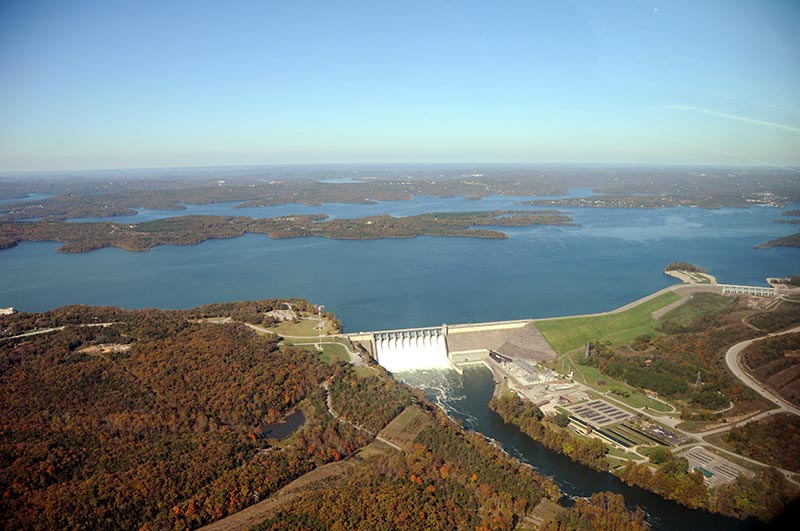
Perks
In exchange for their volunteer labor, Workampers receive a full-hookup campsite with either 50- or 30-amp power as well as water and sewer connections. The sites also come with a fire ring and picnic table.
“Camp hosts live in the campground to which they are assigned,” Angela said. “There are RV sites closer to the visitor center for those volunteers to use.”
USACE contracts with other people to clean restrooms, showers, and perform other janitorial services, which means Workampers generally don’t do those jobs.
Couples are often assigned to work together in the visitor center, yet they can also split responsibilities so one person staffs the admissions booth and the other does inspections around the park. Or, one person can be working inside the center and the other tending gardens outside.
“You might not be working side-by-side, but you will be working the same hours and in the same location,” Angela explained.
Cell phone coverage is generally pretty good with most carriers everywhere in the park. However, because the visitor center is a certified-green building, it uses a lot of concrete and glass, which may interfere with reception.
“Coverage is good especially when you are closer to Branson, although it can be a little spotty in the remote locations,” Angela explained. “We tell people that, as rangers, we know what rock to stand on and where to hold your phone to get the best reception.”
Matt said government work phones operate on the Verizon network, but he uses AT&T as his personal provider and doesn’t often have problems.
There is no internet service available at the campgrounds, but people can connect to the internet via their cell devices. Other volunteers have set up T Mobile home accounts and used Starlink for internet service.
“We have internet service at the visitor center. If someone has something super-important they need to do, they are welcome to come up on their day off and before or after their shifts to use it,” Angela said.
Application Process
Table Rock Lake will hire 12 to 13 Workampers to work every 90 days from April to June, June to August and August to October. Opportunities are available for couples, solos, and families. Older teenagers may be able to help with field trips and wearing the Bobber costume.
There are still two visitor center positions open for the summer of 2024, and the project has some camp host vacancies yet this year.
Applications and resumes are accepted all year long. Then, in the fall, Angela reviews the waiting list and new applications she has received. She also refers to the list if a Workamper needs to back out of their commitment.
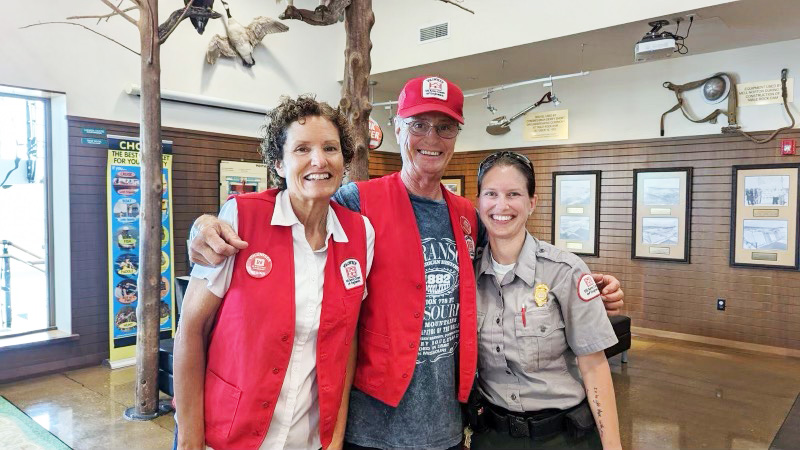
Camp hosts are sent a short interview questionnaire to complete, then Matt follows up with a phone call.
“The questions mainly pertain to your knowledge and computer skills, but we also want to know how you would respond to a situation,” he explained. “The form asks for your preferred time to volunteer and how long you’re wanting to stay so we know the best places to put you in the project.”
At the visitor center, the questions pertain to experience working with large groups and how a volunteer might prioritize tasks. The questionnaire also asks for reference information. All volunteers are required by federal law to pass a background check, which can be completed upon arrival.
Traits and Qualifications
The most important trait Table Rock Lake looks for in volunteers is the ability to communicate well with the public and having an interest to help others, Matt said.
“You are going to be interacting with the public a lot, so having good communication skills is very important as is having strong organizational skills,” he added. “Because we have camping tags, maps, annual passes, etc., in the booth, keeping that organized is really beneficial for everyone.
“People should also have a passion for being outdoors and for recreation, too,” he explained. “Volunteers should have working knowledge of the recreation.gov website, which is our main provider for reservations software.”
Although not required, it is helpful if camp host volunteers have familiarity with RV maintenance issues because campers often have questions about their rigs and need knowledgeable advice, he added.
At the visitor center, being conversational is a big plus.
“If you don’t like people or talking to folks, then your time at the front desk probably won’t be as pleasant as you’d like,” Angela said. “Being friendly and outgoing is awesome, but volunteers need to be flexible, too. Some days the visitor center is organized chaos. We may have a field trip scheduled, when another bus just pulls in for an impromptu presentation.”
Teachers make great volunteers, she added, because they are used to talking to people and, especially, children. They can often think fast on their feet to come up with answers or know where to get them.
“I am asked questions daily that I would never even guess people would wonder about those things,” she explained. “If you have never taught before, but want to learn, you can watch me a couple of times, then try it yourself while I observe.”
Angela said people without experience should also apply.
“Some of my best volunteers have been people on their first assignment,” she explained. “We like people who are really excited to be working here. Being excited often outweighs experience because people can learn to do specific jobs.”
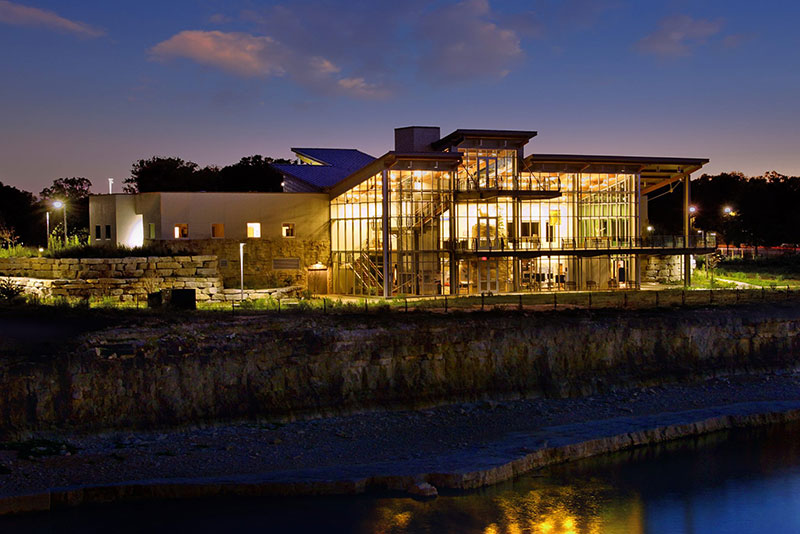
Things To Do in the Area
Portions of Table Rock Lake is actually within the Branson city limits. But rangers give volunteers tips on ways to navigate backroads to avoid traffic.
Branson is well known for its family-friendly shows and country-western music. There are also several amusement parks in the area, and Branson Landing is basically a large outdoor shopping mall with lots of great dining options.
The lake is on the border with Arkansas and not too far from Oklahoma. Angela said Missouri and Arkansas have well-developed trail systems for biking and hiking.
“We also have a lot of great fishing here. People can catch bass in the warm water below our spillway, but we also have really cold water that is excellent for fly fishing for trout,” she explained.
The project is about 45 minutes from Springfield, which has a population of 170,000. It is three hours from Little Rock, four hours from St. Louis, and five hours from Oklahoma City.
Bass Pro Shops is headquartered in Springfield, which hosts its flagship store. Big Cedar Lodge, which is owned by Bass Pro, offers some of the best golfing in the Midwest. There are several Civil War battlefields in the area as well as popular hot springs attractions. The original Route 66 maneuvered through that region, and people can still check out some of the original displays or local museums.
For More Information
More information about the Table Lake project can be found on the USACE website.
Information about Workamping opportunities can be found on volunteer.gov.
Angela can answer questions about volunteering at the visitor center by calling 417-213-4777, or Matt can answer questions about serving as a camp host by calling 417-213-4795.
Thanks for reading the Gone Workamping blog from Workamper News. Join Workamper.com today to see all the new job opportunities for RVers, as well as the training and resources to confidently find the right Workamping job for you – easily and securely.


